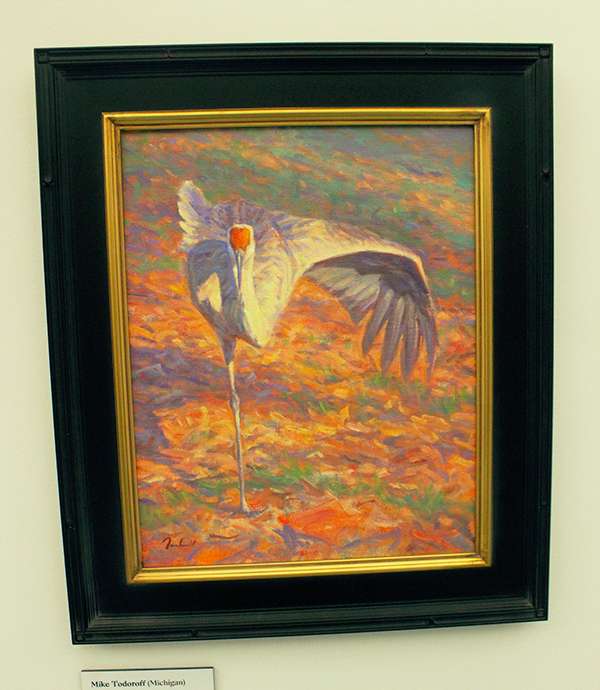
By CRISTINA JANNEY
Hays Post
An art exhibit at the Sternberg Museum of Natural History focuses on human impact on the animal world.
"Art and the Animal: Art That Matters to the Planet" from the Society of Animal Artists will be on display at the museum through May 5.
This exhibit includes the work of 60 artists originating from the United States, Canada, France, New Zealand, Scotland, Spain and Sweden. The art includes sculpture, as well as 2-D work.
Each of the pieces of artwork is accompanied by a short artist statement about the environmental message behind the piece of artwork.
This exhibit will educate and inspire participants on topics such as; climate change, illegal wildlife trade, endangered species, habitat loss, and pollution, a statement on the museum's website said.
One painting depicts an elk and on the horizon you can see a raging wildfire.


A sculpture of a seas turtle looks beautiful from the front, but if you look through the clear bottom of its shell you can see garbage, typical of what a sea turtle might ingest in the ocean.
"The way that we look at it, on the surface it looks fine, but we're not doing a good job," Rachel Unruh, Sternberg public relations coordinator, said.
Sea animals eat plastic bags, mistaking them for jellyfish. Other animals become caught in nets, fishing line or plastics. This can hamper their ability to eat, and the animal starves to death.
Animals also can accidentally eat tiny bits of plastic, known as microplastics.
This exhibit follows another recent art exhibit on a similar topic — "Environmental Impact."

"I remember people talking about 'Environmental Impact' being kind of depressing, but if you don't talk about some of the sore subjects, how are you going to save the planet and work on conservation?" Unruh said.
You might not think much about a painting of a beautiful sandhill crane. However, the artist statement explains that legislation in his home state of Michigan would make sandhill cranes game birds. They are currently protected as migratory birds.
"Come with a open mind and see what you can learn from the paintings," Unruh said.
The Sternberg has two other traveling exhibits on display now — "Exploring Extinction: The Dodo" will be at the Sternberg through May 15, and "In Search of Earth's Secrets" will be at the Sternberg through March 30. However, Earth's Secrets is set to be back in Hays this summer for programs in cooperation with the Hays Public Library.
These exhibits will be followed by "Sahara Sea Monsters" coming to the Sternberg on May 28.






